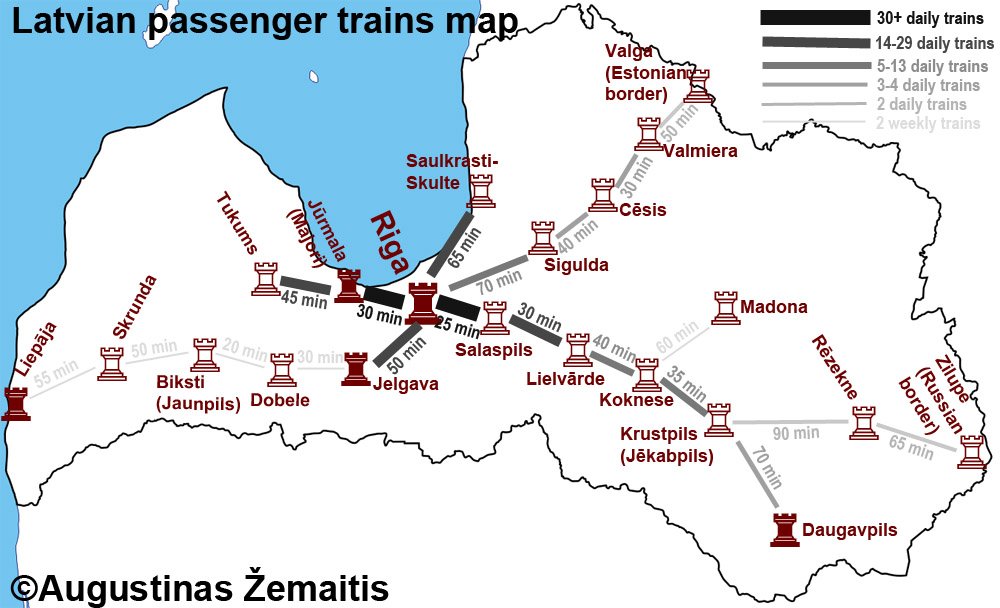Latvia is a “single-city country”. Approximately half of its population lives in Riga and suburbs, with the rest of the country inhabited relatively sparsely.
As such, transportation opportunities beyond Riga are somewhat limited.
Locations around Riga and those in Eastern Latvia are best accessible by trains (if you have no car). The network there is extensive but there are no high-speed railroads. Nearly every Latvian passenger train route either begins or ends at Riga. In the areas close to Riga, the passenger railway traffic is especially frequent, with a train in each direction every 20-60 minutes between morning and almost midnight. It gets progressively scarcer further from Riga however, with just 2-4 daily trains each way to the most distant cities such as Daugavpils. To some cities, there are merely two trains a week (on Friday and Sunday, mostly aimed at students getting home). While Latvia seemingly has an extensive railroad network, it should be noted that the passenger services have been scaled down or removed on many tracks.

Areas around Riga are considered suburbs as far as railways matter and the tickets are sold by zones akin to subways.
Buses are the best public option for traveling where the passenger trains don’t reach or are scarce. They reach pretty much everywhere, however unlike railways they are operated by many companies making exact timetables more difficult to find.

Given rare public transport, having a car is advisable if going beyond main cities and Riga surroundings. Outside of Riga suburbs, there are no highways. The trunk roads are tarred, but they still have just two lanes. The other roads are surfaced in gravel. 90 km/h is the highest allowed speed, reduced to 50 km/h in towns.
While driving from Riga to Liepāja, Daugavpils and Ventspils may take ~3 hours, there are no internal flights as the ones that existed proved to be unprofitable due to the thin population outside Riga.

